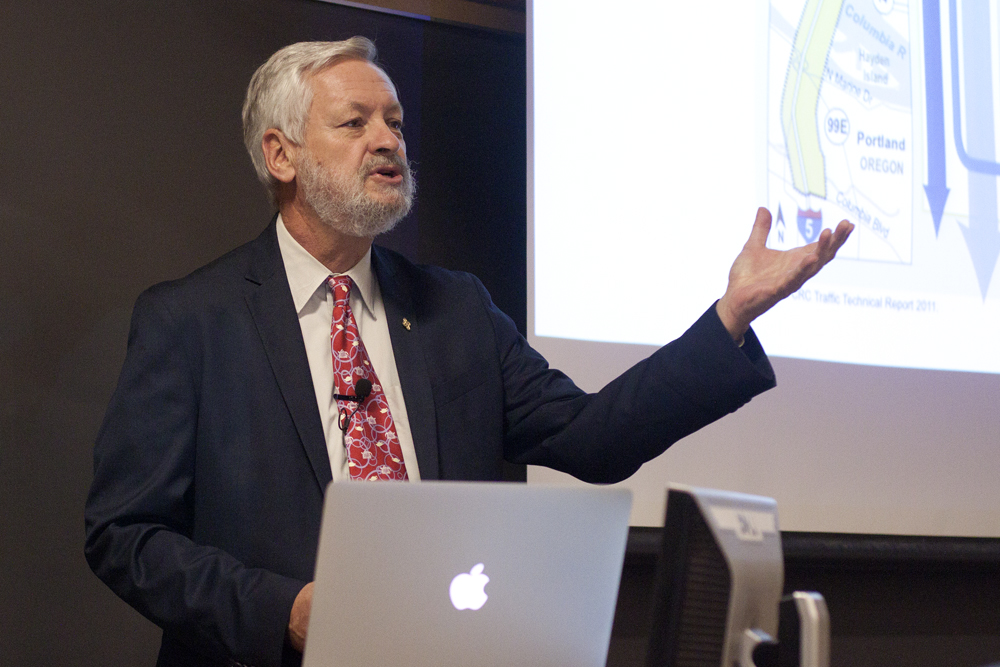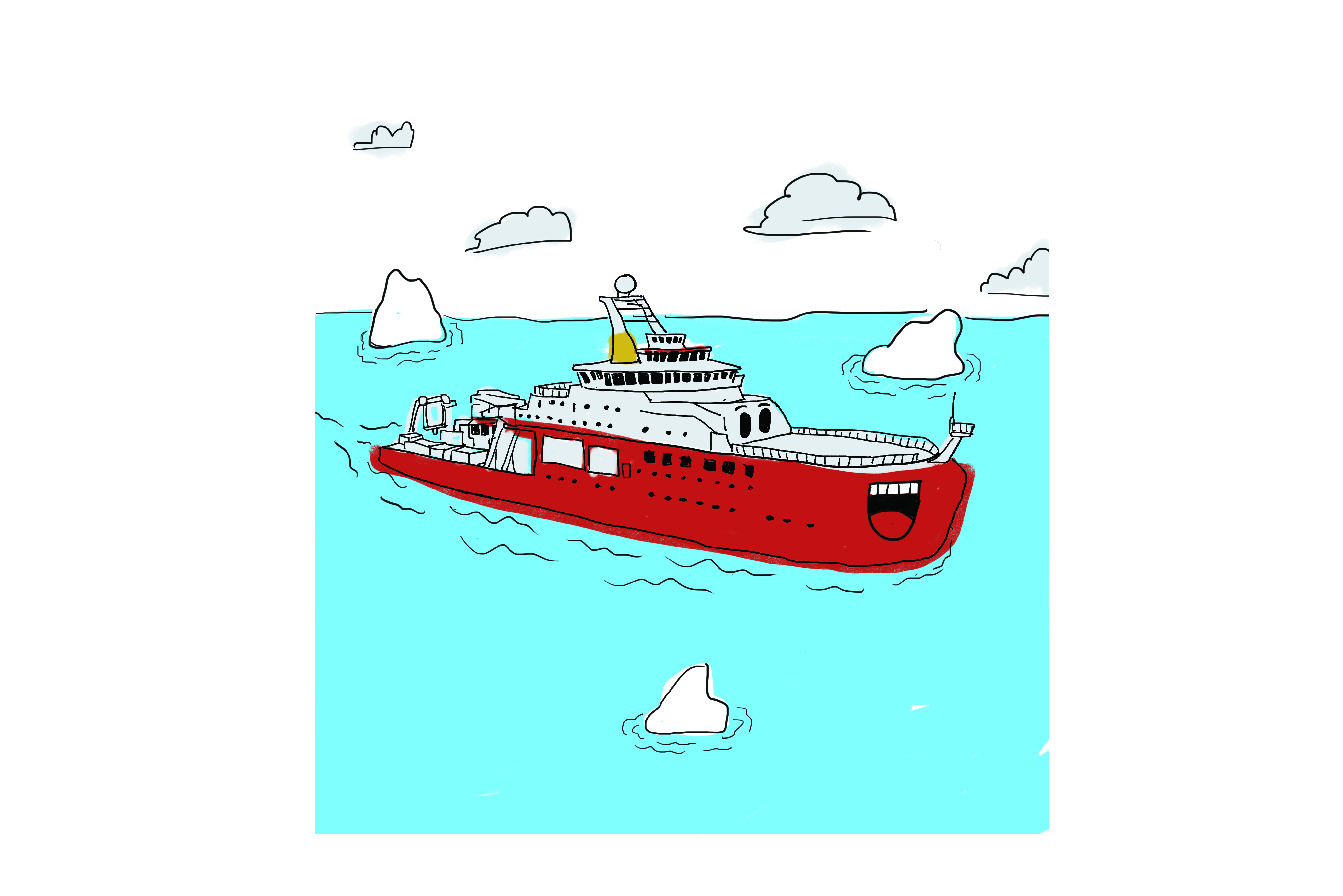This past week, while attempting to bike to class from my residence in Northeast, I discovered that my tire had gone flat. I decided to deal with the issue later and brave the horrors of downtown car-traffic near campus. I tossed my things into my blue Honda Civic, until now slumbering peacefully curbside, and drove downtown.
I arrived some time later and, after circling several streets and side streets and passing innumerable “no parking” zones, found a space. I found that I had forgotten to turn off Strava, the iPhone app I use to track my biking progress. The drive to campus was logged as a bike ride, and according to the eight timed segments of the trip, I had only beat one “personal record” on the drive.
Just one. Using a car, with an internal combustion engine and everything. Prehistoric creatures had to literally die and transubstantiate into fossil fuels in order to propel me through the streets of Portland using fire, explosions and all of the wonderful industrial technology humankind has created since the Industrial Revolution. The trip by car took an entire 10 minutes longer than traveling by bicycle.
Clearly, some ways of getting around the city are better than others. Some ways are easier and more convenient. Others, not so much. So in the spirit of providing a public service to the Portland State community, and to anyone who happens to come upon this issue of the Vanguard, I have put together a handy transportation guide to the city of Portland, with the purpose of evaluating the various means of travel and judging them mercilessly. Perhaps even making a few of them cry, if necessary.
Walking (Grade: A-)
This is perhaps the oldest form of transportation, in use as long as human beings have had legs. In Portland, this form of movement is still in widespread use. Advantages include ease of parking (just stand there! Done!), the ability to travel in any space the same size as oneself and the lack of fuel costs. Disadvantages include the weather, by which I mean the rain, which is everywhere at all times from October through about April.
Public Transportation (Grade: B+)
Public transportation in Portland takes several forms, the MAX, the bus and the Portland Streetcar chief among them. These allow the good citizens of Portland to get around without having to use their feet or merge onto I-5. Generally a good option, especially if one has over an hour to get to where they need to go and happens to carry numerous small bills on their person. Public transportation has been renowned for its tendency to strengthen the immune systems of the citizenry by confining them to enclosed tubes with a variety of infectious diseases and airborne bacteria. Think of it as a flu shot that can also get you to work in the morning.
Bicycle (Grade: A)
The preferred method of transport for many people in the city. One can see squadrons of bicycles moving in formation across the streets and bridges of Portland. They resemble flocks of migrating birds soaring majestically across the landscape. They are also ideal for those who wish to flagrantly disregard traffic regulations or weave between other cars in the road. In this way, the bicyclist also resembles the struggling salmon, making its way upstream (particularly if said bicyclist ignores the direction of one-way streets, which I have actually witnessed on more than one occasion). The bell is also a nice touch, and compares favorably to the sound of car horns blaring in the distance wherever motorists travel.
Skateboard (Grade: B)
Skateboards, long the favorite of such notable cultural icons as Tony Hawk and Bart Simpson, have managed to retain a foothold in the urban landscape of Portland. Neither as fast as a bicycle nor as versatile as merely walking, skateboarders find themselves somewhat between these two worlds when it comes to using Portland’s infrastructure. Routinely cursed by bicyclists for using the bike lane and by pedestrians for terrorizing the genteel, mild-mannered foot-travelers, skateboarders may simply be misunderstood. Or they may be doing it on purpose. It isn’t clear. It is, however, among the few methods of travel that allow one to yammer on a cell phone while propelling oneself through space, without a helmet, while carrying a bag of groceries. Which is something, I suppose.
Segway (Grade: C-)
The Segway. What can be said about it that has not already been said? The Segway is the preferred transportation device for mall cops and tour guides, and indeed anyone else who wishes to travel at a walking speed without worrying about the pesky cardiovascular benefits of physically moving one’s musculature from place to place. One sees them frequently on the Eastbank Esplanade, where Segway tours occur during the less-rainy times of the year. They resemble a family a ducks: the tour guide in the lead and a line of helmeted tourists following, bobbing up and down slightly to the rhythm of the Segway. This is literally the only use of the Segway I have witnessed in Portland, save one.
Lately I have seen an unusual, hands-free model of Segway both in the Pearl District and on Killingsworth in northeast Portland. There is a glowing blue light emitting from the bottom. The riders in question are always alone, gliding in a seemingly disembodied manner above the pavement. They appear to hover. Who are these hovering Segway riders? Where do they come from? Where are they going? These are questions we do not have answers to at the present time. They may or may not be of our time, but in the end, they remain Segways, if in a slightly modified form. Maybe this is a vision of the future, perhaps a vision of a dumb future. If the future is stupid, it will likely involve Segways in whatever form they take.
In the meantime, consider this column your guide to navigating the city. Whether by foot, bicycle, public transportation, skateboard or Segway, there are certainly better options than relying on a car (okay, maybe not the Segway). Godspeed, Portland.






